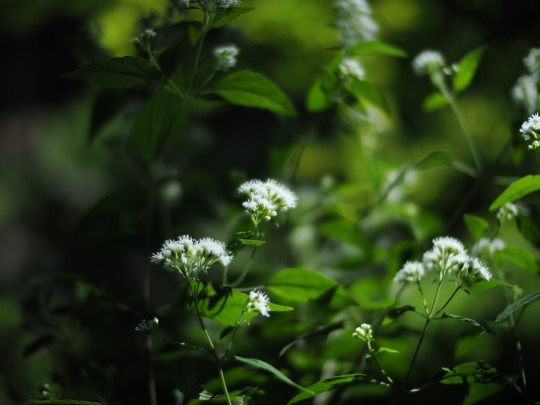#ageratina altissima
Text



Native Plant of the Day - Ageratina altissima aka White Snakeroot
Most people think I'm foolish for allowing this perennial weed to grow in my family yard however it is deer resistant and I rather like incorporating woodland seeds from the adjacent forest floor plants into our shade gardens. Fair warning this plant is is toxic and can pass toxins onto people if consumed by cattle but there is evidence of people using poultice and teas from the root stock for various ailments (not that I would risk that or recommend that without further research). The plant performs best in partial sun and produces beautiful white blooms throughout September and early October. This photo was taken in northern NJ.
#Ageratina altissima#white snakeroot#northeastern american native plants#sorry for the absense i live in philly now
3 notes
·
View notes
Text

Well that pause lasted longer than I intended. October was a busy month. Onward we go with some more Boyd Crevice pics, which should have come before the previous batch but they got shunted into a different folder by mistake and I missed them on the first pass. Had more than I thought I did that were taken with my DSLR before the battery died.
Photo is blurry as fuck so I'm not 100% on the ID, but I'm pretty sure this is Ageratina altissima, white snakeroot (careful, it's poisonous).
#Bruce Trail#Boyd Crevice#Sydenham section#Niagara Escarpment#Bruce County#Ontario#Canada#hiking#hiking trail#forest#trees#wilderness#outdoors#flower#flora#Ageratina altissima#white snakeroot#poisonous plants#vegetation#photography#digital photography#DSLR#Canon 6D#photographers on Tumblr
0 notes
Photo



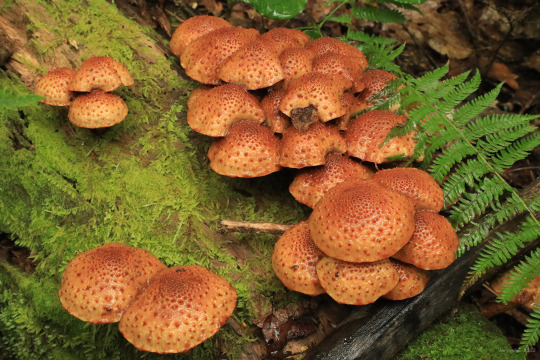
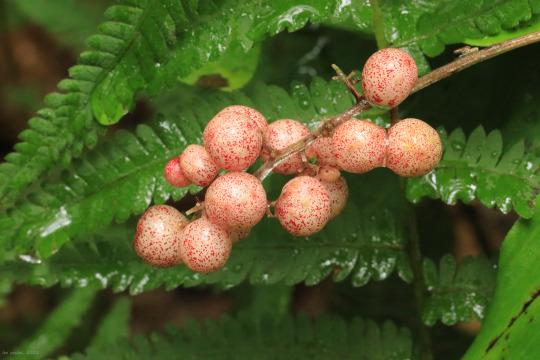
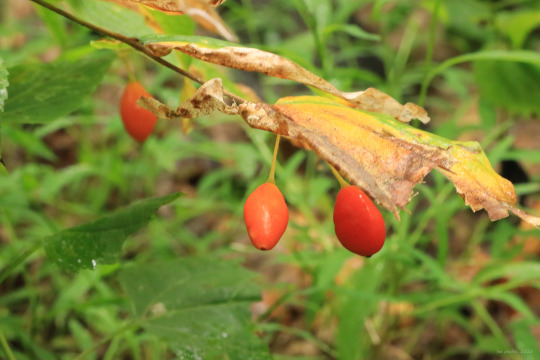
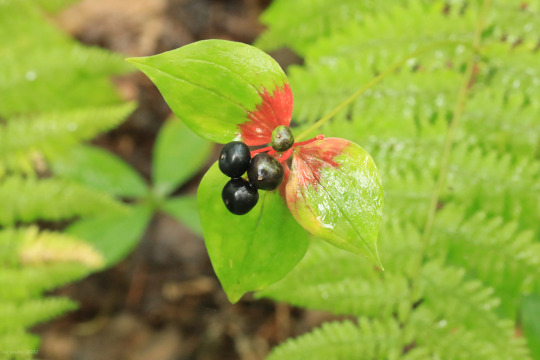
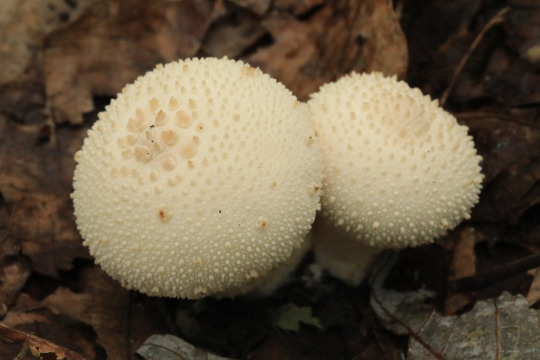
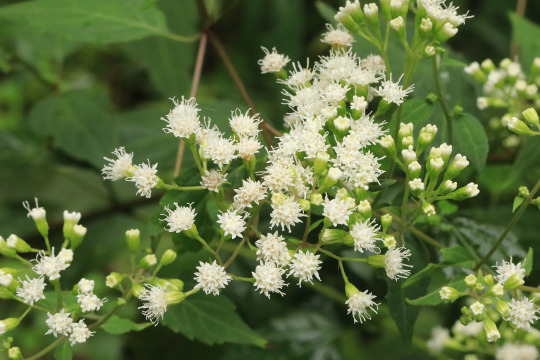

Photos from a walk in Appalachia’s late summer woods. The flowers of spring have now borne their late summer fruit, fungi rule the forest floor, and the intoxicating perfume of dying ferns fills the air.
From top: the incandescent red berries of partridgeberry (Mitchella repens), which illuminate the forest understory wherever its creeping foliage grows; a gorgeous Pholiota cluster, possibly golden pholiota (Pholiota aurivella); the ripening, spotted berries of false Solomon’s seal (Maianthemum racemosum), which will turn bright red by October; the luminous orange-red berries of yellow mandarin (Prosartes lanuginosa), also known as yellow fairybells; the deep purple-blue fruit of Indian cucumber-root (Medeola virginiana); common puffball (Lycoperdon perlatum), just now fruiting in the local woods; white snakeroot (Ageratina altissima), a deadly beauty infamous for diary poisonings in the 1800′s; and bluestem goldenrod (Solidago caesia), also known as wreath goldenrod, an elegant, shade-tolerant perennial unusual among goldenrods in that its flowers grow from the leaf axils rather than from long panicles at the ends of the stems.
#appalachia#vandalia#west virginia#late summer#flora#berries#wildflowers#scott run#scott run trail#coopers rock state forest#mitchella repens#partridgeberry#fungi#pholiota#maianthemum racemosum#false solomon's seal#prosartes lanuginosa#yellow mandarin#yellow fairybells#medeola virginiana#indian cucumber-root#lycoperdon perlatum#common puffball#ageratina altissima#white snakeroot#solidago caesia#bluestem goldenrod#blue-stemmed goldenrod#wreath goldenrod
79 notes
·
View notes
Text
The greenhouse is hot-hot-hot, Downey sweats, his shift sticks to his side. His collar wilts. It is too much. It is not enough. He has been here since mid-morning tending his plants, making notes, moving pots around. Now, in mid-afternoon, he rests on a stool and stares at a desert-rose. The caterpillar of the Syntomeida epilais, spotted wasp-moth, feeds on this flower, aside from oleander and other poisonous sister plants. The black and orange body of that particular creature is pinned inside a box in his office next to others from the tiger-moth genus.
Vetinari once pinned Syntomeida ipomoeae, the orange-banded wasp-moth, to Downey’s door as a warning after a week of particularly harsh harassment. Fist fights, busted lips, yanked hair, bruised ribs, tumbling down stairs—it’s a wonder neither broke anything. Downey left a gift of Ageratina altissima, milk snakeroot, on Vetinari’s desk. Ludo forced them to a truce which lasted for all of a fortnight.
gods these two were never not a hot wreck
also downey, you need to learn to better manage your homoerotic desires that you can’t name and can’t look at because you’re repressed and 17.
#downey: what if I beat the living shit out of him?#ludo: or not??#ludo: or you could talk to him like a normal person??#downey: HEY DOG-BOTHERER. GET OUT OF MY SCHOOL.#thus always#thus always the redux#writing#discworld#lord downey#vetinari#downlock
12 notes
·
View notes
Text
Formal Elements
Ageratina altissima is also known as white snakeroot. It is a poisonous herb that grows perennially (for a relatively long time).
The common privet has little green berries. It is the caterpillar foodplant of the privet hawk-moth Sphinx ligustri.
Selfheal is edible and is a weed. It has been used as medicine by 17th century Europeans.
For the background, I used graphite and smudged it. Then I went in with black and grey pens to make the plant life stand out. Grouping of my plants created a dynamic spatial relationship between the larger plants and the small weeds. It gives more weight to the top left of my artpiece.

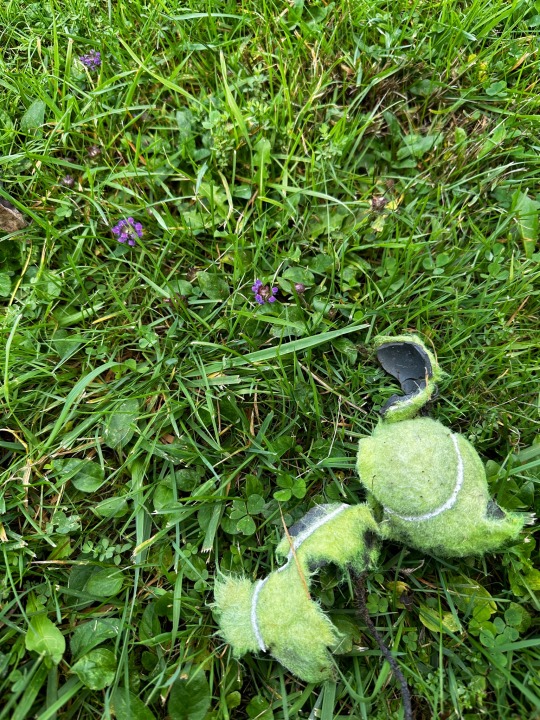


3 notes
·
View notes
Video
youtube
“Ageratina altissima” music (C)(P)Ken Clinger.
1 note
·
View note
Text
'Milk Sickness' caused by White Snakeroot

Ageratina altissima, also known as white snakeroot, is a poisonous plant native to the prairie of North America that causes tremors in herbivores. Tremetone is one of the major toxic compounds in white snakeroot, which can contaminate the meat, milk, and dairy product of herbivores. If consumed in large enough quantities, it can cause tremetol poisoning in humans. The poisoning is also called Milk Sickness. In the early 19th century, The Mideast part of the U.S. was flooded with European immigrants who were unaware of white snakeroot. It killed thousands of people, including Nancy Hanks, the mother of U.S. President Abraham Lincoln.

Facebook: KingDraw_chem
FB group: KingDraw Q&A
Twitter: KingDraw_chem
YouTube: KingDraw
Medium: KingDraw
Quora: KingDraw
You can also email [email protected] for more software tutorials :)
#chemistry#science#kingdraw#molecule#organicchemistry#organic#compound#dailychem#chem#software#poisonous
1 note
·
View note
Text
I had encountered this plant in the mountains of San Pedro, Mexico y Monterrey, decided to take a small photo of it.
This plant is known as the white Snake Root-(Ageratina altissima) it is poisonous, If you touch it and accidentally touch your mouth and eyes, it can get into your system. If ingested, this plant is toxic to mammals, it can kill cattle or horses, and yes including Humans.

1 note
·
View note
Photo



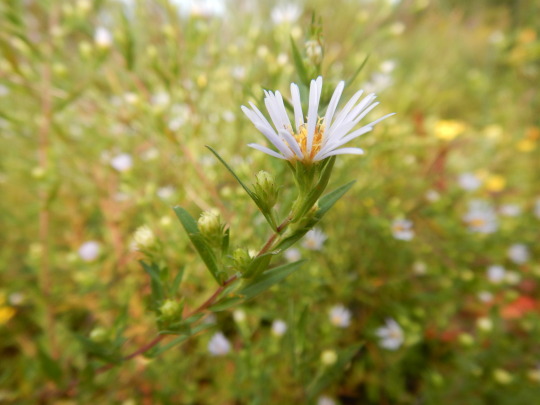

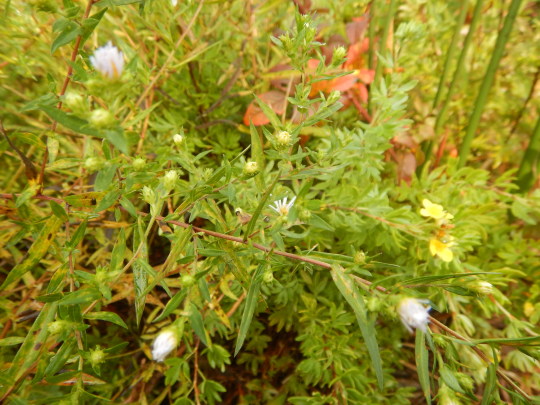

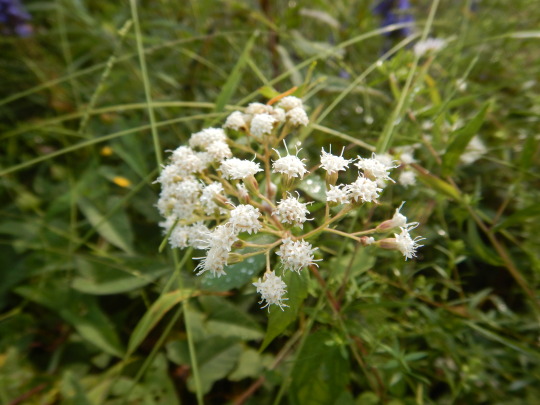

Pearl’s fen, Greene co. OH
Nabalus racemosus
Glaucous leaved hairy topped rattle snake root,
A fen endemic in the southern states and a high PH boreal species in the north, you really only see these in areas of fens where calceric waterlogged gravel beds are with permiated marl like qualities
Symphyotrichum firmum
Smooth swamp aster, taken out of S. puniceum complex due to flower morphology, sparcely pubescent to glaberous stems and ploidy.
two common ones,
Verbesina alternifolia,
Alternate leaf mesic forest wingstem.
Ageratina altissima,
Tall snakeroot, tall milksickness weed,
The plant that cows eat that occasionally cause milk sickness and killed honest Abe’s mom, thanks @locallysourcedtrauma for the history lesson btw.
#Nabalus racemosus#nabalus#symphyotichum#firmum#symphyotrichum firmum#verbesina alternifolia#verbesina#ageratina#ageratina altissima#ohio#wildflowers#botany#nature#naturecore#ecology#plantblr
131 notes
·
View notes
Text

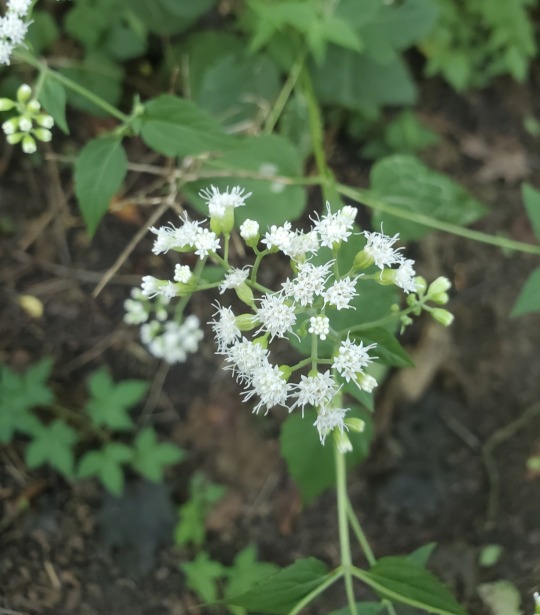
8/12/21
1 note
·
View note
Photo

White Snakeroot, Ageratina altissima (by me)
#White Snakeroot#Ageratina altissima#Ageratina#Asteraceae#Asterales#flowers#plants#summer#Rutgers Ecological Preserve#Rutgers University#Middlesex County#New Jersey#mine
18 notes
·
View notes
Text

White Snakeroot
Scientific name: Ageratina altissima
0 notes
Photo



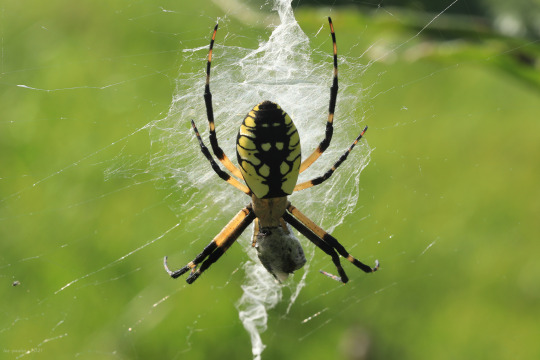

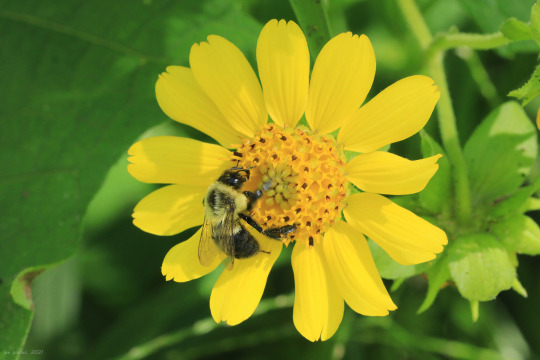




Appalachia’s Late Summer Gifts, Panel 1: warm days, cool nights, soft sunlight, surging wildflowers, sex-crazed bugs, and radiant berries.
#appalachia#vandalia#west virginia#late summer#wildflowers#flora#insects#bidens trichosperma#crowned beggarticks#chauliognathus pensylvanicus#goldenrod soldier beetle#helenium autumnale#common sneezeweed#chelone glabra#white turtlehead#argiope aurantia#black-and-yellow argiope#golden orb-weaver#ageratina altissima#white snakeroot#lindera benzoin#northern spicebush#euthamia graminifolia#flat-top goldentop#lance-leaved goldenrod#grass-leaved goldenrod#conoclinium coelestinum#mist flower#blue boneset#wild ageratum
106 notes
·
View notes
Photo
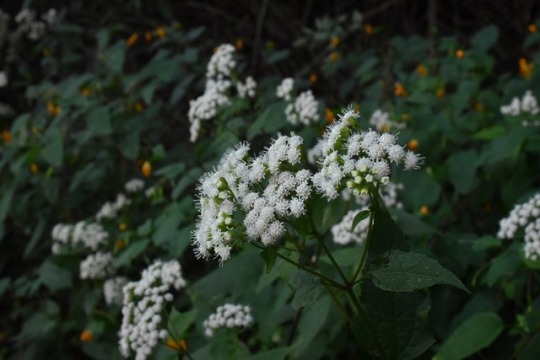
<b>white snakeroot.</b>
#plants#nature#flowers#forest#ageratina altissima#white snakeroot#tall boneset#jewelweed#floral#native nj plants#woods#my photos#los-plantalones
29 notes
·
View notes
Text
Ageratina altissima

White snakeroot contains the toxin tremetol; when the plants are consumed by cattle, the meat and milk become contaminated with the toxin. When milk or meat containing the toxin is consumed, the poison is passed on to humans. If consumed in large enough quantities, it can cause tremetol poisoning in humans. The poisoning is also called milk sickness, as humans often ingested the toxin by drinking the milk of cows that had eaten snake root. Although 80% of the plant's toxin, tremetone, decreases after being dried and stored away for 5 years, its toxicity properties remain the same.
This plant may serve medicinal purposes. Root tea has been used to treat diarrhea, kidney stones, and fever. A root poultice can be used on snakebites.
0 notes




